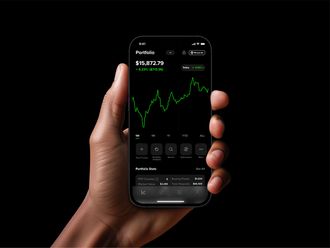Dubai: Gold and Jewellery shoppers in the UAE – and everywhere else, for that matter – need to take a backseat as the precious metal seems bent on setting new records. Their hopes that gold prices would cool down after the latest US Federal Reserve announcement have not come to pass.
At an eye-watering $2,049 an ounce – the UAE gold rate at Dh229.25 a gram – consumers will find it difficult to make regular trips to jewellery stores to add to their holdings. For a new generation of shoppers now fancying investments in gold, current prices dictate they will need to wait and watch.
Because the current rally in gold could even take it past the all-time high of $2,070 (set in mid-2020), and then make a run to the $2,100 an ounce level. That could then mean more waiting for gold shoppers.
UAE shoppers hold back in Q1-23
In the first three months of 2023, UAE gold buyers have already made their feelings clear about the prices, a period when bullion was averaging $1,890 an ounce. According to the latest World Gold Council data, UAE shoppers bought 9.7 tonnes of gold jewellery in Q1-23, but down from the 12.5 tonnes same time in 2022. (For full-year 2022, UAE’s overall gold jewellery sales were 46.9 tonnes, making it the biggest Middle East market for the asset, ahead of Saudi Arabia with 37.9 tonnes.)
Similar buying dips were recorded in just about every global market where gold is a favour consumer choice, except for in China, where demand perked up significantly because of the Chinese New Year seasonal buying. India, the second biggest market for gold, too saw a dip as shoppers fretted about prices.
“At current price levels, gold is an investor story rather than about consumers,” said Andrew Naylor, Head of Middle East and Public Policy at World Gold Council.

Investors – including heavy buying by central banks – is back to using gold to hedge against the risk of developed economies going into recession. There have also been more localised issues in the US relating to mid-tier banks.
With investors and central banks in the fray, shoppers worldwide will have to bide their time for the next window of lower price opportunity.
Fed’s move sparks latest gold rush
Another rate hike from the Fed last Wednesday should have, ideally, pulled gold prices down and stabilise/raise dollar’s pricing power. This time, there has been no such thing. This is the catalyst gold needed and the reason why it’s around $2,050 rather than the sub-$2,000 levels seen through most of Q1-23. (On Thursday, it briefly hit the $2,062 mark.)
SO, what should gold consumers be doing? Not much but wait for the jitters about the global economy to subside. That might take time, though.
“There are many factors that are at play here beyond the Fed’s signaling of a rate-hike pause,” Aziz Moti, General Manager and Head of Analysis at ISA Bullion.

One cannot ignore the increasing ranks of failed banks in the US and unending geopolitical tensions. There is uncertainty in the markets right now. Only time will tell if gold continues its steady march. What is apparent is that gold remains an important hedging tool in every investor’s arsenal.
What World Gold Council sees on demand
- Jewellery demand was mixed across the Middle Eastern region in Q1; higher prices dampened demand in some markets but encouraged quasi-investment buying in others. The UAE (-22%) saw weaker y/y demand, with gold price rises in the former magnified by local currency depreciation against the dollar.
- We continue to see healthy upside for investment this year, while the picture for fabrication (jewellery and technology) is more muted. Further robust central bank buying is expected, albeit below 2022’s record. Modest growth is likely in both mine production and recycling.
- In India, record high – and volatile – domestic gold prices discouraged both investment and jewellery consumption during the quarter (Q1-23). The price has also encouraged a rise in smuggling activity, incentivised by an avoidance of import duties. This has reportedly encouraged demand in smaller cities, and among independent retailers, where cash purchases are more commonplace.
- The recovering domestic economy and healthy income growth reignited domestic consumption, while the eye-catching gold price performance spurred investment interest. Should very elevated local gold prices persist, they could hinder gold jewellery demand. An additional threat comes from the potential for consumers to allocate more of their budgets to travel and entertainment, similar to the post-COVID trend that has been experienced in Western markets.
Smaller ‘windows’ for buying
Gold shoppers with long memories will remember much the same happened after the 2008-09 Global Financial Crisis, when gold was the only asset to offer some assurances in a highly uncertain time. That saw gold prices cross $1,900 during the period, a range that been unthinkable until the moment it happened. But as soon as the global economy, gold dropped and by quite a bit.
It might be too early to think about price drops for now, though. But would gold prices stretch to a new high of $2,100?
“Gold is going to shine given this macro backdrop and possibly eye a move above the $2,100 if the de-risking mood on Wall Street remains over the next few sessions,” said Edward Moya, Senior Market Analyst at Oanda. “The force is strong for gold bulls given all the banking turmoil and rising risks that the US will have a tough recession.

The real economy is going to get knocked down a lot given what we are seeing with financials and that will keep demand elevated for safe-havens.
And any mention of safe havens makes it about gold.











